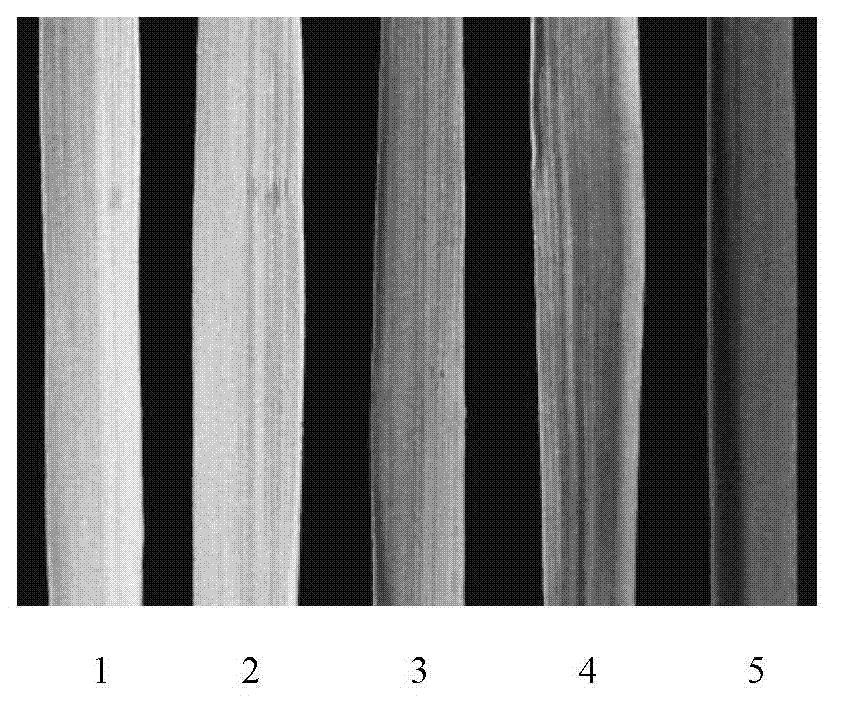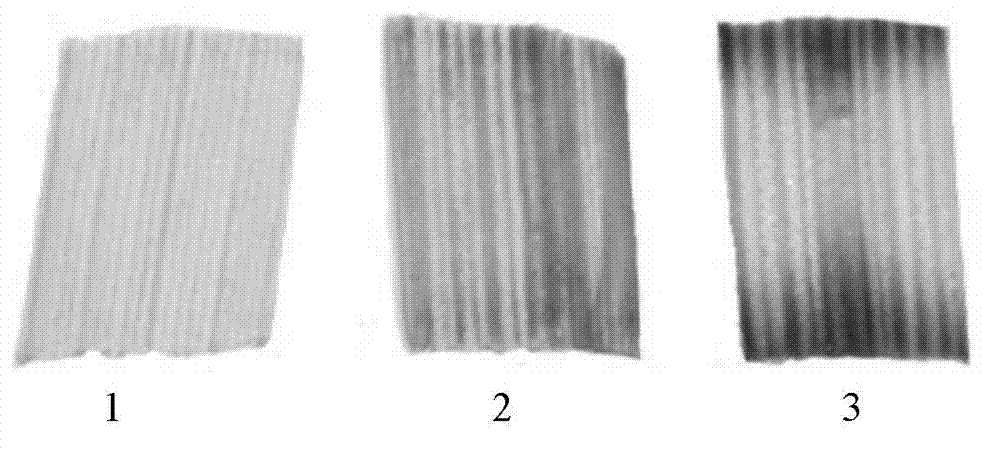RPRP (Rice Photorespiration Related Protein)-1 capable of increasing photosynthetic efficiency of plants as well as coding gene and application of RPRP-1
A technology encoding gene and photosynthetic efficiency, applied in the field of protein and its encoding gene and application, to achieve the effect of improving photosynthetic efficiency
- Summary
- Abstract
- Description
- Claims
- Application Information
AI Technical Summary
Problems solved by technology
Method used
Image
Examples
Embodiment 1
[0051] Example 1, the acquisition of rice photorespiration-related gene RPRP-1
[0052] 1. Screening of photosynthesis-related mutants in rice
[0053] The T2 generation seeds in the enhancer T-DNA insertion mutant library are screened, and the specific operation is as follows: 20-25 seeds are taken for each independent line, sterilized with 1% concentration (V / V) sodium hypochlorite solution, and shaken for 10 minutes , and then rinse the seeds with tap water for 10 minutes, soak the seeds to accelerate germination, and sow them in the soil (nutrient soil: frog stone = 3:1), plant in the greenhouse (photoperiod 16h / dark cultivation 8h), and observe for 15-30 days Seedling leaf color changes. The mutant lines were counted, and the specific phenotypes involved leaf albinism, yellowing, chlorosis, and variegated leaves. ( figure 1 )
[0054] 2. Screening and obtaining of mutants co-segregated with rice T-DNA insertion
[0055] Part of the leaves of the mutant that had grow...
Embodiment 2
[0081] Example 2, functional verification of RPRP-1 of the present invention and its coding gene
[0082] 1. Complementary Verification of RPRP-1
[0083] 1) Take part of the leaves of wild-type rice Nipponbare grown for 2 weeks, extract total RNA, reverse transcribe it into eDNA, use this eDNA as a template, and use SHMTr and SHMTf in Example 1 as primers to amplify the complete gene coding region , into the pEASY-T1simple vector for sequencing.
[0084] 2) the rice Actin promoter (its nucleotide sequence can be as shown in SEQ ID No. 3 in the sequence listing) sequence is inserted between the multiple cloning site Kpn I of the plasmid pCambia2300 to obtain the intermediate vector pCambia2300A;
[0085] 3) The nucleotide sequence containing the RPRP-1 gene sequenced correctly in step 1) was digested from the pEASY-T1 simple vector and connected between the multiple cloning sites SmaI and SalI of the pCambia2300A plant binary expression vector to construct To form a compleme...
PUM
 Login to View More
Login to View More Abstract
Description
Claims
Application Information
 Login to View More
Login to View More - R&D
- Intellectual Property
- Life Sciences
- Materials
- Tech Scout
- Unparalleled Data Quality
- Higher Quality Content
- 60% Fewer Hallucinations
Browse by: Latest US Patents, China's latest patents, Technical Efficacy Thesaurus, Application Domain, Technology Topic, Popular Technical Reports.
© 2025 PatSnap. All rights reserved.Legal|Privacy policy|Modern Slavery Act Transparency Statement|Sitemap|About US| Contact US: help@patsnap.com



